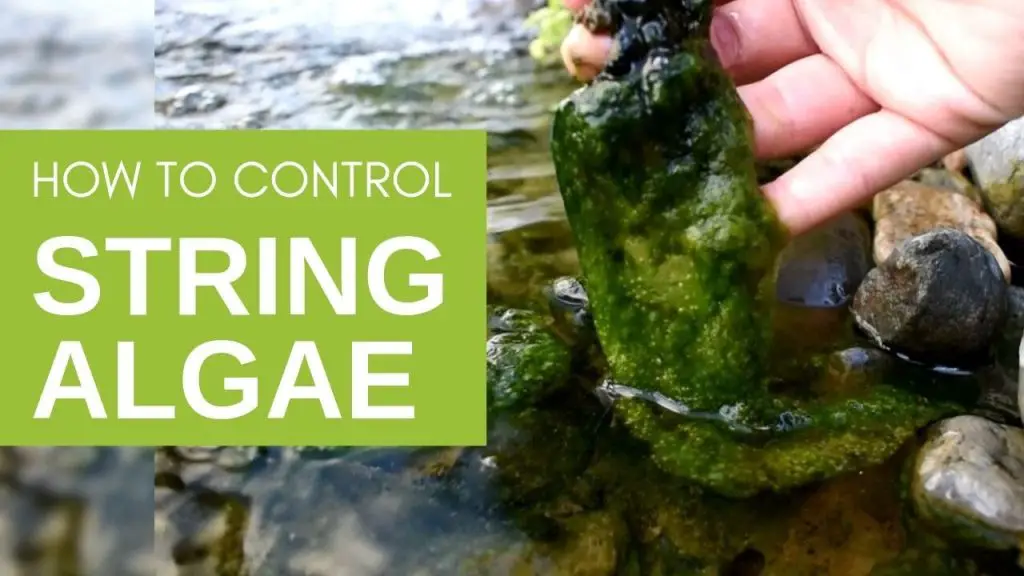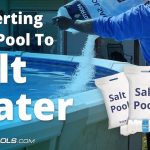String algae, also known as blanket weed, can be a nuisance for fish pond owners. This unsightly algae can quickly take over your pond, clogging filters, and competing with aquatic plants for nutrients. Not only does it ruin the aesthetic appeal of your pond, but it can also harm your fish by depleting oxygen levels and creating a breeding ground for harmful bacteria. If you’re struggling with string algae in your fish pond, fret not! There are several effective ways to combat this pesky problem and restore the beauty and health of your pond.
1. Manual Removal
One of the simplest methods to control string algae is by manual removal. Use a pond net or a rake to skim the algae from the surface of the water. Be sure to remove as much of the algae as possible, including the roots. Regular manual removal can help prevent the algae from spreading and keep it in check.
2. Increase Water Flow
String algae thrives in stagnant water with low oxygen levels. By increasing the water flow in your pond, you can create a less hospitable environment for the algae to grow. Consider adding a fountain, waterfall, or aerator to keep the water moving and well-oxygenated. This will help prevent the buildup of algae and promote a healthy ecosystem in your pond.
3. Add Beneficial Bacteria
Introducing beneficial bacteria to your pond can help combat string algae by breaking down organic matter and reducing nutrient levels. These bacteria compete with algae for nutrients, making it harder for the algae to thrive. Look for pond-safe bacterial products and follow the instructions for application. Regular use of beneficial bacteria can help maintain water quality and keep algae growth under control.
4. Install UV Clarifier
A UV clarifier is a useful tool for controlling string algae in fish ponds. This device uses ultraviolet light to kill algae cells and prevent their growth. As water passes through the clarifier, the UV light disrupts the algae’s reproductive cycle, making it unable to multiply. Installing a UV clarifier in your pond can help keep the water clear and free of algae, creating a healthier environment for your fish.
5. Balance Nutrients
String algae thrives on excess nutrients in the water, such as nitrates and phosphates. To combat algae growth, it’s essential to balance the nutrient levels in your pond. Avoid overfeeding your fish, as uneaten food can contribute to nutrient buildup. Consider adding aquatic plants to your pond to absorb excess nutrients and compete with algae for resources. Regular water testing can help you monitor nutrient levels and make adjustments as needed.
6. Use Algae Control Products
There are several algae control products available on the market that can help eliminate string algae in fish ponds. These products come in various forms, such as liquid treatments, granules, or algaecides. When using algae control products, be sure to follow the instructions carefully to avoid harming your fish or other aquatic life. It’s essential to choose products that are safe for fish and plants in your pond.
7. Provide Shade
String algae thrives in sunlight, so providing shade in your pond can help reduce algae growth. Consider adding floating plants, water lilies, or aquatic grasses to create shade and cover the surface of the water. Not only will this help control algae, but it will also provide shelter for your fish and create a more natural habitat in your pond.
8. Maintain Proper Filtration
Effective filtration is crucial for keeping string algae at bay in your fish pond. Make sure you have a well-functioning filtration system that can remove debris, excess nutrients, and algae from the water. Clean or replace filter media regularly to prevent clogs and maintain optimal filtration efficiency. A good filtration system will help keep your pond water clean and clear, reducing the likelihood of algae outbreaks.

Credit: m.youtube.com
9. Consider Fish Stocking
Some fish species can help control string algae in fish ponds by feeding on the algae and keeping its growth in check. Fish such as koi, goldfish, and grass carp are known to consume algae and help maintain a balanced ecosystem in ponds. Before introducing fish to your pond for algae control, be sure to research the specific fish species and their compatibility with your pond environment.

Credit: cencalkoi.com
10. Monitor and Prevent Recurrence
After implementing the necessary measures to get rid of string algae in your fish pond, it’s essential to monitor the water quality and algae growth regularly. Keep an eye on nutrient levels, water clarity, and algae presence to catch any signs of recurrence early on. By staying proactive and maintaining a healthy pond environment, you can prevent string algae from taking over your pond again.
String algae can be a persistent problem in fish ponds, but with the right strategies and consistent maintenance, you can effectively control and eliminate it. By combining manual removal, water flow management, beneficial bacteria, UV clarifiers, nutrient balancing, algae control products, shading, proper filtration, fish stocking, and regular monitoring, you can keep string algae at bay and enjoy a clean, clear, and healthy pond for your fish to thrive in.
Remember that each pond is unique, so it may take some trial and error to find the best combination of methods that work for your specific pond conditions. With patience and dedication, you can successfully combat string algae and create a beautiful and harmonious aquatic environment for your fish to enjoy.




